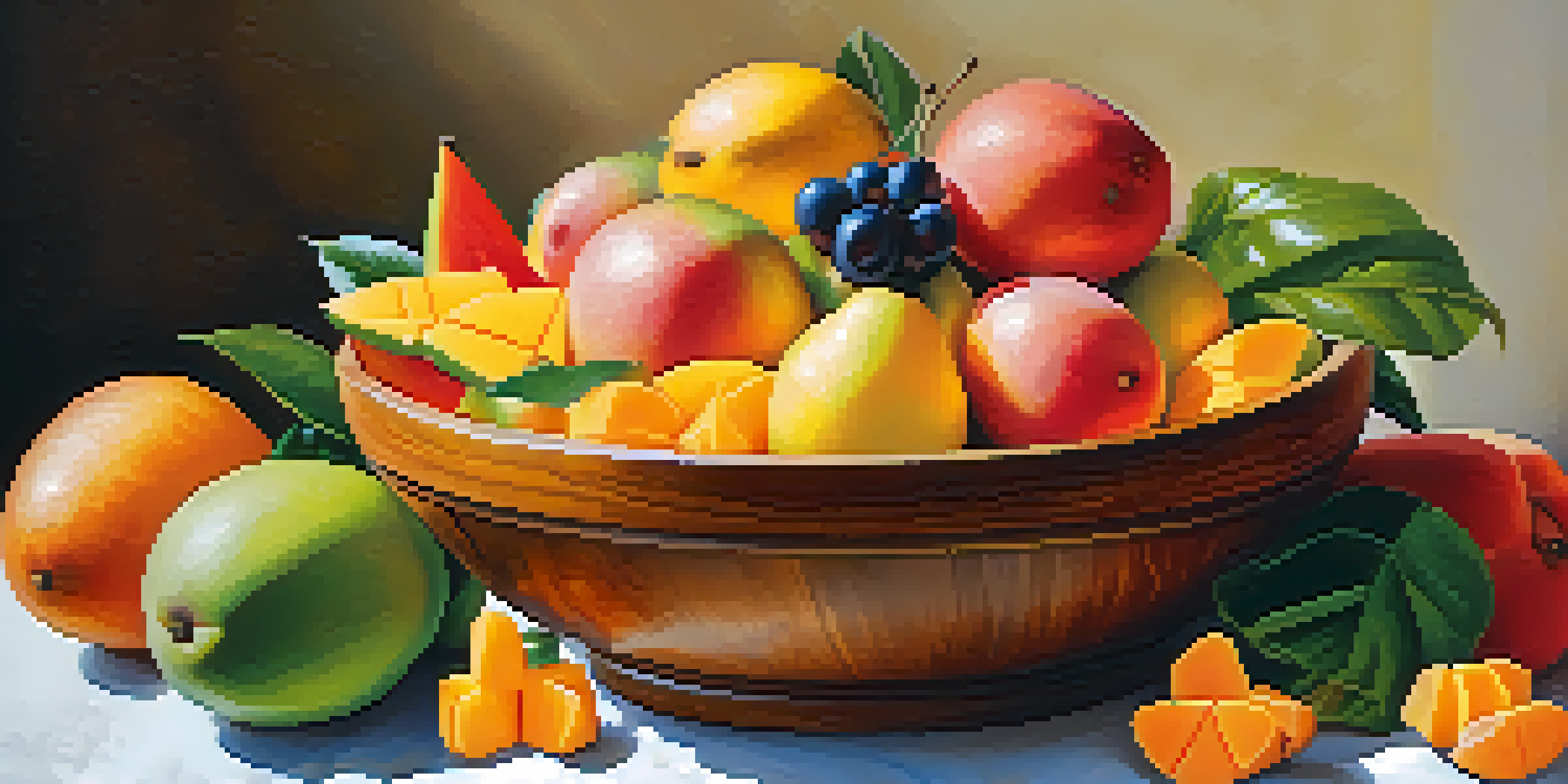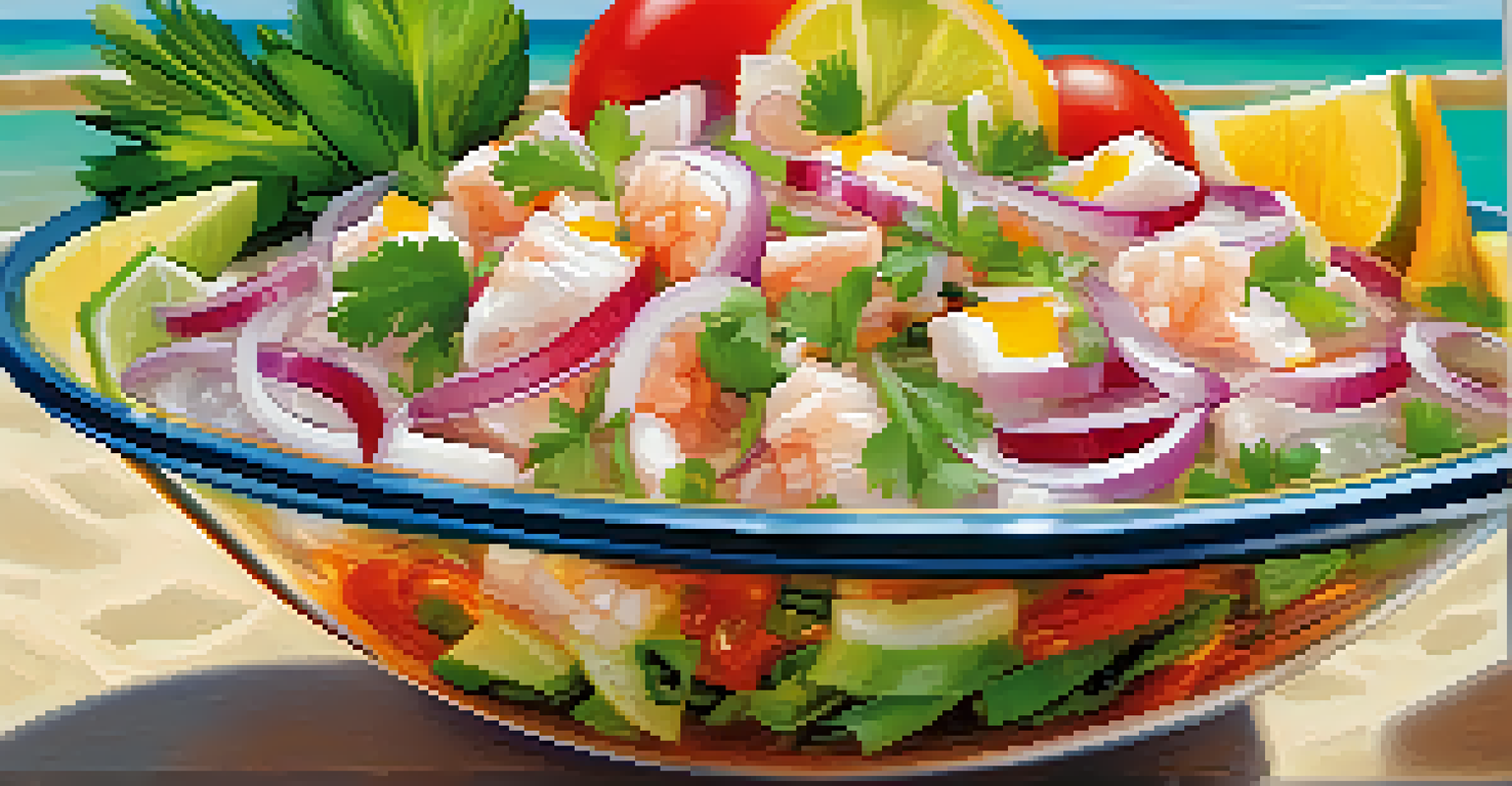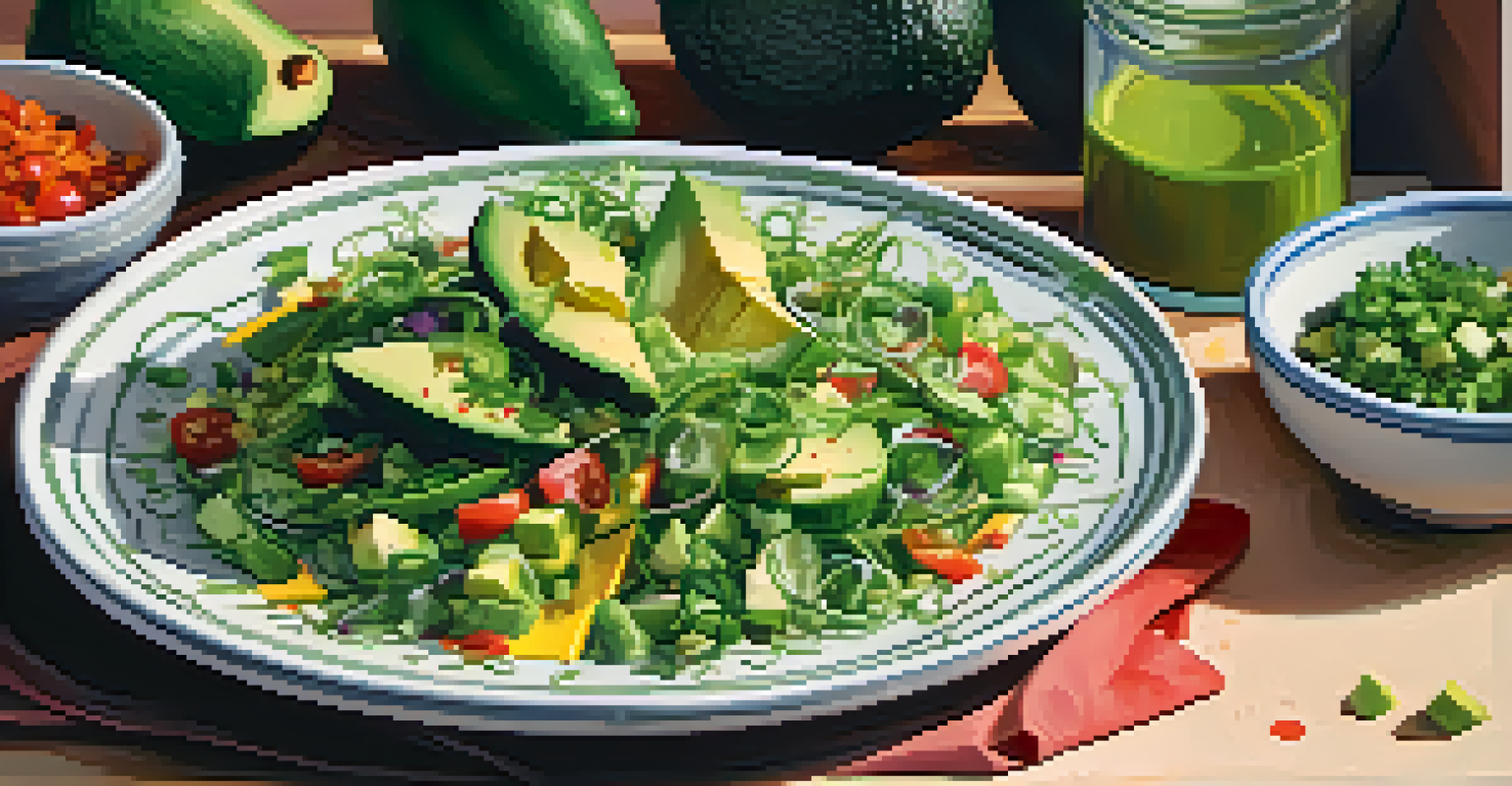Culinary Exploration of Raw Foods in Caribbean Diets

Understanding Raw Foods in Caribbean Culture
Raw foods have long been a staple in Caribbean diets, reflecting the region's abundance of fresh produce. These foods are often consumed in their natural state, preserving nutrients and vibrant flavors. Think of it as nature's way of providing a colorful palette for delicious meals that are also health-conscious.
Let food be thy medicine and medicine be thy food.
In many Caribbean households, raw foods like fruits, vegetables, and nuts take center stage, especially in local dishes. For instance, salads made with fresh mango, avocado, and cucumber are not only refreshing but also packed with vitamins. This emphasis on freshness showcases the island's rich agricultural heritage.
Traditionally, raw foods are integrated into daily meals, often accompanied by local spices and herbs. This combination allows for a culinary journey that celebrates the land's bounty while maintaining a strong connection to cultural practices. The result? A delightful symphony of flavors that reflects the Caribbean's diverse identity.
The Nutritional Benefits of Raw Foods
One of the most significant advantages of incorporating raw foods into the diet is their nutritional density. Raw fruits and vegetables retain most of their vitamins, minerals, and enzymes, which can be diminished during cooking. This means that a colorful salad can be more beneficial than a cooked dish, providing essential nutrients for overall health.

In the Caribbean, tropical fruits like papaya, pineapple, and guava are not only delicious but also loaded with antioxidants. These compounds help combat oxidative stress in the body, promoting better health. Including these fruits in your diet can support immune function and improve skin health, making you feel vibrant and energized.
Raw Foods Celebrate Caribbean Culture
Raw foods are integral to Caribbean cuisine, showcasing fresh, local ingredients and vibrant flavors that reflect the region's agricultural heritage.
Moreover, consuming raw foods can assist in digestion due to their high fiber content. Foods such as raw carrots and leafy greens encourage a healthy gut, which is crucial for nutrient absorption. This focus on digestion is particularly important in Caribbean cultures, where food plays a central role in social gatherings.
Traditional Caribbean Dishes Featuring Raw Ingredients
Several traditional Caribbean dishes highlight the beauty of raw ingredients. Take, for example, 'ceviche,' a dish made with raw fish marinated in citrus juices, often garnished with fresh vegetables. This dish not only tastes refreshing but also exemplifies the region's ability to blend flavors while keeping ingredients raw.
You are what you eat, so don’t be fast, cheap, easy, or fake.
Another popular dish is 'salad de frutas,' a vibrant fruit salad that combines local fruits like mango, banana, and coconut. This dish showcases the natural sweetness of the fruits, often served at celebrations and gatherings. It's a perfect example of how Caribbean cuisine embraces raw foods in a festive context.
Additionally, 'callaloo,' a leafy green often used in cooking, can also be enjoyed raw in salads. When mixed with a tangy dressing, it offers a nutritious and flavorful option. These dishes demonstrate how raw ingredients can be creatively woven into Caribbean culinary traditions.
The Influence of Climate on Raw Food Choices
The Caribbean's tropical climate plays a significant role in the availability and consumption of raw foods. With abundant sunshine and fertile soil, the region produces a diverse array of fruits and vegetables year-round. This climate encourages a diet rich in fresh, local produce, making raw foods a natural choice for many.
For instance, the warm weather allows for the growth of vibrant fruits like mangoes, papayas, and avocados, which thrive in sunny conditions. These fruits not only add flavor to meals but also contribute to the region's vibrant culinary culture. The climate, therefore, directly influences the types of raw foods that grace Caribbean tables.
Health Benefits of Raw Ingredients
Incorporating raw foods like tropical fruits and vegetables enhances nutrition, boosts immune function, and aids digestion.
Moreover, the reliance on seasonal produce aligns with the idea of eating fresh and local. Many Caribbean communities celebrate harvests by incorporating seasonal fruits and vegetables into their meals, reinforcing the connection to the land and its offerings. This practice not only supports local agriculture but also enhances the flavor and nutritional value of the diet.
Modern Trends: Raw Food Movement in the Caribbean
In recent years, the raw food movement has gained traction in the Caribbean, with more people recognizing the health benefits of uncooked meals. This trend often involves not just traditional dishes but also innovative recipes that highlight raw ingredients. As health consciousness rises, many Caribbean chefs are embracing this movement and experimenting with raw foods.
Restaurants and cafes across the region are now offering raw food options, such as smoothie bowls and raw desserts. These creative dishes cater to health-conscious diners looking for flavorful yet nutritious alternatives. This evolution in Caribbean cuisine reflects a broader global trend towards healthier eating habits.
As this movement grows, it brings a renewed focus on sustainability and local sourcing. Many chefs are prioritizing locally grown produce, reducing their carbon footprint, and supporting local farmers. This commitment not only enhances the quality of the food but also strengthens community ties, making the culinary landscape more vibrant.
Challenges and Misconceptions About Raw Foods
Despite the benefits, there are misconceptions surrounding raw foods that can deter people from incorporating them into their diets. Some may believe that raw diets lack variety or flavor, which couldn't be further from the truth. The Caribbean is a treasure trove of flavors, offering a plethora of raw ingredients that can be combined in countless ways.
Another challenge is the perception that raw foods are difficult to prepare. While some raw dishes may require a bit of creativity, many are simple and quick to make. For instance, a basic fruit salad or a green smoothie can be whipped up in minutes, proving that healthy eating doesn't have to be complicated.
Growing Trend of Raw Food Movement
The raw food movement is gaining popularity in the Caribbean, with chefs creatively incorporating raw ingredients into modern dishes while promoting sustainability.
Additionally, there may be concerns about food safety when consuming raw ingredients. It's essential to source fresh produce from reliable sources and wash it thoroughly to minimize risks. Understanding these aspects can help demystify raw foods and encourage more people to enjoy their benefits.
Embracing Raw Foods for a Healthier Lifestyle
Embracing raw foods can lead to a healthier lifestyle, offering an array of benefits that go beyond just nutrition. By incorporating more raw fruits and vegetables into your meals, you can enhance your overall well-being and vitality. It's like giving your body a natural boost, filled with energy and nutrients.
Additionally, enjoying raw foods can be a fun and creative culinary adventure. Experimenting with different combinations of fresh ingredients can ignite your passion for cooking and inspire new dishes. Whether it's blending a smoothie or crafting a colorful salad, the possibilities are endless.

Ultimately, integrating raw foods into your diet allows you to explore the vibrant flavors of the Caribbean while prioritizing your health. It's a delicious way to connect with the land and its offerings, making every meal a celebration of freshness and culture.